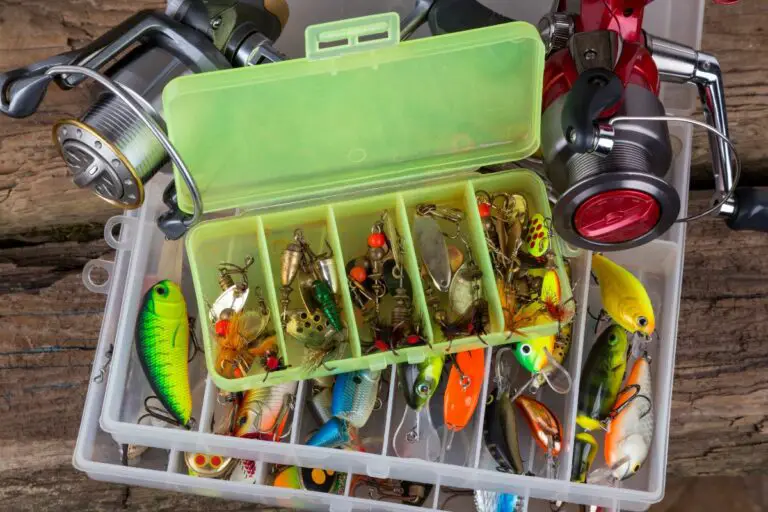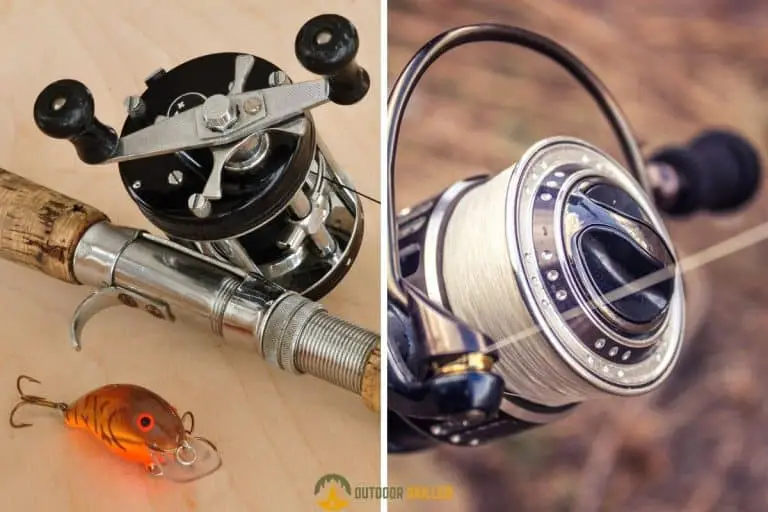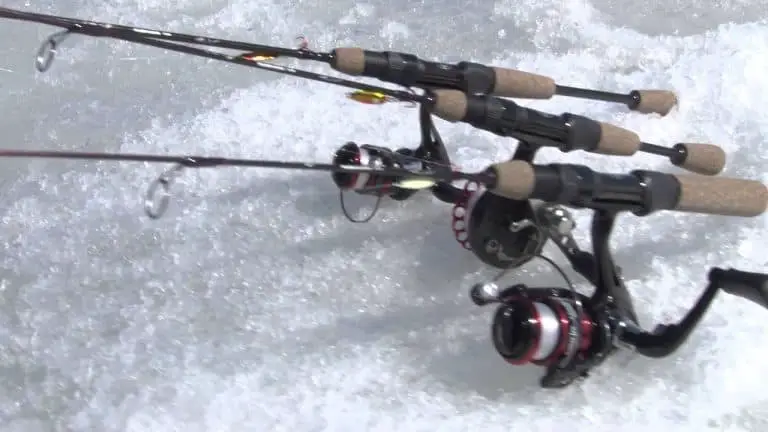What Does Fish Poop Look Like? Here’s Why It’s Important to Know
Fish poop, like any other kind of poop, can vary in color, shape, and consistency.
It’s important to be aware of what fish poop normally looks like, as any abnormalities can often be an indicator of a health problem with the fish.
So, what does fish poop look like? Fish poop is normally round, less elongated, and sometimes strings. It should be of solid consistency, and its color should match the color of the food that the fish are feeding on. If you notice any change in the appearance of fish poop, it can be a symptom of an infection, constipation, or overfeeding so it’s best to contact a professional to prescribe the right treatment.
Keep reading to learn more about the properties of fish poop, how it can indicate the fish’s well-being, and how to remove fish poop from your tank.
Table of Contents
What Is Fish Poop Called?

Scientifically, fish poop is known as detritus.
The word detritus refers to the dead particles of the organic materials that animals eat. This includes fragments of dead organic bodies and fecal particles.
This mixture of dead organic materials is dissolved in the fish’s digestive system; then, it’s excreted out of the body as poop, where it decomposes by microorganisms to recycle the nutrients.
How Do Fish Poop?
Many often wonder how fish poop since there’s no visible opening apart from their mouth, which actually led some to believe that fish poop out of their mouth.
But the truth is that fish excrete their fecal waste through a small opening known as the anus, which is located at the end of the alimentary canal behind the fish’s rear fin. They also get rid of some kinds of waste through their gills and skin
How Often Do Fish Poop?
Fish poop as often as they need to or whenever there is an urgency to eliminate waste from their system.
If the fish are fed the same quantities of food on a regular basis, they will poop at least once every 48 hours, and they will maintain that frequency as long as their feeding schedule doesn’t change.
When the fish are not fed on a regular basis or if they’re starved, they will poop less frequently and might not poop at all for up to 4 days.
Fish might also take longer to poop if they’re overfed, as their digestive system will become too jammed with undigested food, and they can only poop when digestion is completed. It can take several days for them to finish digesting depending on how complex the food is.
Where Does Fish Poop Go?

When wild fish poop in the water, the poop will float through the current and then settle on the bottom before it starts to slowly dissolve in the water. Undissolved parts will go deeper into the water and gradually break up into smaller pieces before getting decomposed by microorganisms.
Meanwhile, in an aquarium, the poop will mix with aquarium sand or pebbles and will soon dissolve in water. Undissolved parts will not completely vanish, so it’s recommended to regularly change the water to avoid messing up your aquarium.
Properties of Fish Poop
Fish poop can vary in color, shape, texture, size, and odor depending on the fish’s feeding behavior and health.
It’s important to know what fish poop would normally look like to be able to recognize any abnormalities that would indicate that there’s something wrong with the fish’s well-being.
Let’s break down all the properties of fish poop:
Color of Fish Poop
The normal color of fish poop usually ranges from brown to dark brown.
It can also depend on the color of the food that fish eats. That is because poop consists of waste products being expelled from the body, and these waste products contain remains of undigested food particles.
For example, if the fish’s diet mainly consists of plants, their poop color will be green, while if they eat flakes or certain worms, their poop color will be red.
Shape and Texture of Fish Poop
The normal shape of fish poop is more circular and less elongated. However, the shape might change depending on the fish’s diet and health.
For example, if the fish are overfed, the shape of the poop will become more elongated, while in the case of infection, it will become both round and stringy.
When it comes to the texture of the poop, it’s normally solid, but it can be slimy and sticky depending on the fish’s health.
Size of Fish Poop
While it seems impossible, scientists were able to do some research to study the normal size of fish poop from different fish species.
According to research, it was discovered that fish poops are almost always the same in width, which ranges from 0.6mm to 1.5mm. The length of the poop, on the other hand, varies according to the fish’s diet and health.
Smell of Fish Poop
Like any kind of poop, fish poop would typically have a distinctive unpleasant smell.
In open waters, this kind of smell wouldn’t be very noticeable, and it would go away quickly since the poop would dissolve in the water.
In still water, on the other hand, the smell can be much stronger, especially in a closed aquarium, as it can build up over time. So, it’s very important to frequently change the water in your aquarium to keep the water clean and free of any unpleasant smells.
Can Fish Poop Indicate the Fish’s Health?
Similar to human beings, the color and consistency of fish poop can indicate a lot about their health.
So, the best way to recognize issues in the fish’s health is to observe their poop appearance as well as frequency. This will allow you to address and treat any symptoms early, as fish are sensitive creatures, and if they’re not treated on time, they will stop eating and die within a few days
So, let’s take a look at what some abnormal fish poop appearance could indicate about the fish’s health:
Black Fish Poop
In humans, black poop usually indicates an increase in iron levels in their diet or it could be a sign of internal bleeding. With fish, however, black poop can be a symptom of constipation or a kind of parasitic infection in their digestive tract.
This could happen due to a change in the fish’s diet. If the fish stop eating, it’s recommended not to try any kind of medication by yourself and to consult a vet as soon as possible.
Related: check out this guide to why do Trout turn black here.
Brown Stringy Fish Poop
Long stringy fish poop is a clear sign of constipation. This kind of poop will not float immediately after it’s expelled as it will remain hanging from the fish’s body and trailing behind them.
The normal color of poop ranges from brown to dark brown, but if the color keeps getting darker and darker, this could also be a sign of constipation.
Constipation could happen due to a poor diet or anal inflammation, and it could be deadly to the fish if left untreated.
White Fish Poop
White fish poop often indicates the presence of bacteria in the fish’s digestive tract. You can make sure by checking the texture and shape, as it’s usually stringy and lumpy.
It can also be caused by malnutrition, as the fish wouldn’t be getting enough nutrients.
If the white poop is too pale or even translucent, this could be a sign of underfeeding your fish or that there are not enough nutrients in their diet. At this point, it’s not actually poop that the fish are expelling, but rather the mucus coating in their digestive tract.
Air Bubbles in Fish Poop
The presence of air bubbles in fish poop means that the fish are not getting enough oxygen as they will be gasping in for more air.
This can happen because the water is too warm or because your tank is overstocked.
How to Deal with Irregular Fish Pooping?

To maintain regular pooping behavior in fish, you need to maintain healthy eating behavior and metabolism.
Here are some tips you can follow to ensure that you’re properly feeding your fish:
- Enhance eating conditions in the tank by keeping the water temperature comfortable. It’s recommended to keep the water temperature between 76 and 81°F because colder temperatures can slow down the fish’s metabolism.
- Make sure the water in the tank is well-oxygenated and clean. Make sure to remove any food remains and change the water in the tank regularly.
- Try to feed your fish once in the early morning and once at dusk. This will help your fish get used to a regular feeding schedule and anticipate their next meal.
- Don’t feed the fish more than twice a day as they won’t be able to eat all of the food, and it will begin to decompose in the tank, which could kill the fish.
- Make sure the food you’re feeding the fish is not larger than their mouth so they can easily eat and digest it.
- Try to make your fish fast once a week, as this can improve their digestion and help treat constipation.
Tips for Removing Fish Poop from the Tank
Fish poop can accumulate pretty quickly in the fish tank, which will be extremely harmful to the quality of the water and fish’s health. So, here are some tips for removing fish poop from the tank:
Before cleaning your fish tank, you first need to move your fish to a temporary location like polyethylene bags or another fish tank. You also need to remove any decorations inside tank.
The common way to remove fish poop from the tank is to drain the tank’s water, then wash the inside of the tank. Even though this method is time-consuming, it’s still recommended to drain the tank’s water at least once every 2 weeks.
To remove the fish poop without draining the tank, you can use an electric fish tank vacuum cleaner. This tool will absorb the fish poop as well as any other debris floating in the water. You can also use it to clean the gravel and the tank’s walls.
Related Questions
Do Fish Poop Out of Their Mouth?
Fish do not poop out of their mouth. They poop out through their anus, that’s located behind their rear fin. It might appear sometimes that fish are expelling poop out of their mouth, but it’s mostly food particles that fish try to soften by spitting them out and eating them again.
How to Make Fish Poop?
The best way to make fish poop is to change their diet pattern for a few days. You need to include fiber-rich products as they are the most effective in treating cases of constipation in fish. If changing the diet doesn’t work, it’s recommended to seek a vet to prescribe some laxatives.
Why Does Fish Poop Have Multiple Strands?
Fish poop might have multiple strands if the fish are suffering from Carnallanus worms. The strands will be hanging from the fish’s body, and they will be more noticeable if the color of the poop is red or brown. It’s recommended to consult a vet as soon as possible to get the right treatment for this condition.
Will Fish Eat Their Own Poop?
Fish will generally not eat their own poop. They sometimes consume poop by accident, but you’ll notice that they will spit it out again. If you do notice that your fish are eating their own poop, this could mean that the fish are very hungry or that the water in the tank needs to be changed as soon as possible.
Is Fish Poop Good for Plants?
Fish poop is good for plants, and you can use it as fertilizer along with the water in the tank. It will help increase the fertility of the soil because it contains ammonia that decomposes into nitrates, which are good for enhancing plant growth.
Helpful Resources
Why Scientists Just Ran Numbers on All The Fish Poop in The World’s Oceans
Find Fish Faster Anywhere, Anytime
- The Ice Fishing Fish Finders will never let you down
- These Side Imaging Fish Finders will change your fishing experience forever
- You can take these portable fish finders anywhere, and they will still do amazing work
- These Kayak fish finders are the best value for the money you can find
- These Fish Finder GPS combos work like magic
If you like this article, please share it or pin it, you can find the share buttons below. We will really appreciate it ❤️



![How Does The Triple Tail Fish Taste? [Recipes From Top Chefs]](https://outdoorskilled.com/wp-content/uploads/2021/11/tripletail-fish-768x512.jpeg)



